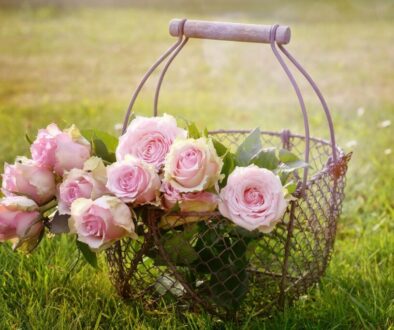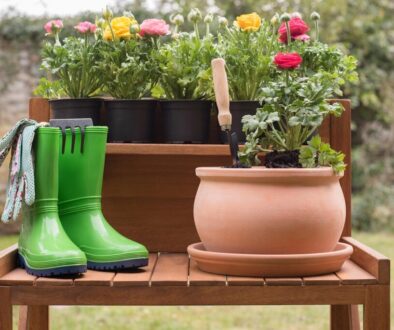10 Common Newbie Gardening Mistakes and How to Avoid Them
Gardening is a joyful, rewarding hobby, but let’s be honest—it’s easy to make mistakes along the way. Don’t worry; we’ve all been there, staring at wilting plants and wondering, “What went wrong?” The good news is that most gardening mistakes are easy to fix or avoid altogether. Let’s explore some of the most common pitfalls and how you can avoid them.
1. Overwatering: When Too Much Love Drowns Your Plants
Watering is essential for plants, but too much of a good thing can spell disaster. Overwatering suffocates plant roots by depriving them of oxygen, leading to root rot and yellowing leaves. You might think you’re being kind, but your plants see it differently.
How to Avoid It:
- Check the soil before watering. Stick your finger about an inch deep—if it’s still moist, hold off on watering.
- Use well-draining soil to prevent water from pooling around the roots.
- Choose pots with drainage holes to let excess water escape.
- Remember, it’s better to underwater slightly than to overdo it. Most plants will forgive a missed watering session but not constant sogginess.
 2. Planting Too Early: Jumping the Gun on the Growing Season
2. Planting Too Early: Jumping the Gun on the Growing Season
We get it—you’re excited to start your garden. However planting too early can expose your seedlings to frost, cold soil, or insufficient sunlight. This rookie mistake often leads to weak plants or outright failures.
How to Avoid It:
- Know your local frost dates and wait until the danger has passed.
- Use a soil thermometer to ensure the soil has warmed up enough for planting.
- Start seeds indoors if you’re eager to get going, then transplant them when conditions are right.
- Patience is key in gardening. Trust us—your plants will thank you for waiting.
3. Ignoring Soil Health: The Foundation of a Thriving Garden
Healthy soil is the secret sauce of successful gardening, yet many gardeners overlook it. Poor soil can’t provide plants with the nutrients they need, leading to stunted growth and disappointing harvests.
How to Avoid It:
- Test your soil’s pH and nutrient levels with a home soil test kit.
- Amend your soil with compost, manure, or other organic matter to boost fertility.
- Avoid over-tilling, which can damage the soil’s structure and kill beneficial organisms.
- Think of soil as your garden’s power source. The better you treat it, the more your plants will thrive.
4. Neglecting to Mulch: Letting Weeds and Water Loss Take Over
Skipping mulch might seem like a time-saver, but it’s a mistake that costs you more work in the long run. Without mulch, your garden is more prone to weeds, water evaporation, and soil erosion.
How to Avoid It:
- Spread a 2-3 inch layer of mulch around your plants, avoiding direct contact with the stems.
- Use organic mulches like wood chips, straw, or shredded leaves for added soil benefits.
- Refresh your mulch periodically to maintain its effectiveness.
- Mulch is your garden’s multitasking superhero. It conserves water, fights weeds, and improves soil—all while making your garden look tidy.
5. Overcrowding Plants: Packing Them In Too Tight
It’s tempting to squeeze as many plants as possible into your garden, but overcrowding creates competition for sunlight, water, and nutrients. Plus, it increases the risk of disease spreading between plants.
How to Avoid It:
- Follow the spacing guidelines on seed packets or plant tags.
- Resist the urge to plant “just one more” in already crowded spots.
- Thin seedlings early to give remaining plants room to grow.
- Think of your plants like dancers on a stage—they need space to shine and perform their best.
6. Forgetting About Pollinators: Missing the Buzz
Pollinators like bees, butterflies, and birds are crucial for fruit and vegetable production, but many gardeners neglect to create a welcoming environment for them. Without pollinators, your plants may produce little to no harvest.
How to Avoid It:
- Plant flowers that attract pollinators, such as lavender, marigolds, and sunflowers.
- Avoid using pesticides, which can harm beneficial insects.
- Provide water sources and shelter, like shallow dishes of water and native plants.
- Invite the pollinators, and your garden will buzz with life—and produce a bountiful harvest.
7. Not Rotating Crops: Letting Pests and Diseases Settle In
Growing the same crops in the same spot every year depletes nutrients and encourages pests and diseases to stick around. It’s a common mistake that leads to declining yields over time.
How to Avoid It:
- Rotate your crops each year, planting different families of vegetables in each bed.
- Group plants by their needs and rotate them as a group.
- Consider cover cropping to replenish soil nutrients between growing seasons.
- Crop rotation isn’t just for farmers—it’s a simple way to keep your garden healthy and productive.
8. Using the Wrong Fertilizer: Too Much of a Good Thing
Over-fertilizing or using the wrong type of fertilizer can damage plants, causing burned roots or excessive leafy growth with little fruit. Fertilizer isn’t a one-size-fits-all solution.
How to Avoid It:
- Match the fertilizer to your plants’ needs (e.g., high-nitrogen for leafy greens, balanced for flowers).
- Follow application instructions carefully to avoid overdoing it.
- Consider organic fertilizers for a slow-release, plant-friendly option.
- Think of fertilizer as a vitamin supplement for your plants—too much or the wrong kind can do more harm than good.
9. Overlooking Pest Management: Letting Critters Take Over
Pests are inevitable in gardening, but ignoring them can lead to disaster. Left unchecked, pests can quickly damage or destroy your plants. How to Avoid It:
How to Avoid It:
- Inspect your plants regularly for signs of pests, such as chewed leaves or sticky residue.
- Use natural pest control methods, like companion planting and introducing beneficial insects.
- Remove heavily infested plants to prevent pests from spreading.
- A proactive approach to pest management keeps your garden thriving and minimizes damage.
10. Skipping Regular Maintenance: Letting Chaos Take Over
Gardens need consistent care to thrive. Skipping maintenance tasks like weeding, pruning, and watering can turn a beautiful garden into a tangled mess.
How to Avoid It:
- Create a simple gardening schedule for tasks like watering, weeding, and harvesting.
- Spend a few minutes each day inspecting your garden and addressing small issues before they grow.
- Treat gardening as a relaxing routine, not a chore—it’ll make maintenance more enjoyable.
- Consistency is the secret to a stunning garden. A little effort every day goes a long way.
Learn and Grow
Mistakes are part of the gardening journey, but each one teaches you something valuable. By avoiding these common pitfalls, you’ll set your garden up for success and enjoy a more rewarding experience. So grab your gloves, head outside, and don’t be afraid to get your hands dirty.
Happy Gardening!




